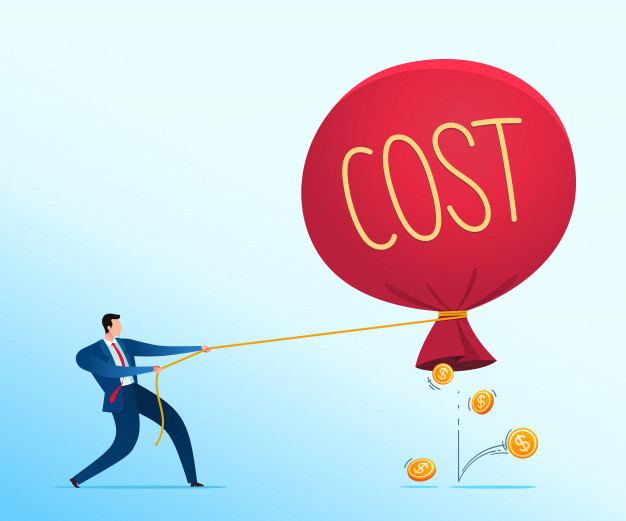
Budding entrepreneurs and new business owners don’t have a shortage of agendas that require their attention. Even so, perhaps the most confusing objective of an entrepreneur’s program is setting prices for the goods and services they provide. Price setting is an integral part of the retailing process and requires thorough comprehension of an enterprise’s position in the market. While you wouldn’t want to sell yourself short, it would also be detrimental to price yourself out of the market. For this reason, coming up with fit prices for your products and services can be a daunting task.
Pricing can be even more of a pain in the neck for businesses that render both products and services for their clients. Enterprises such as Flooring 365 that provide both products and services to their clients have an even harder time pricing their goods. Such companies have to find a balance when pricing their products and services. The right price can generate immense sales, while the wrong one can drastically reduce the customer base. For this reason, a lot of thought has to go into setting up the right prices for your products. For greenhorn business administrators, here are some of the things to consider when pricing products.
Cost of Production

The amount of money required to run your business is the foremost factor to consider when setting up prices. One thing to always keep in mind is that an enterprise can’t sustain itself if the costs of running it exceed the sales. Therefore, when making decisions concerning the price of your products, ensure that you’re thoroughly financially informed. Consult the cost of production when setting up prices including, the expenses that your business incurs every month regardless of sales and the cost to produce and deliver your products. Perhaps the most efficient pricing models are the ones that use the cost-plus method, which involves adding a standard percentage to the cost of production to determine the price.
Competition

Another vital factor to consider when determining the prices for your products is the competition. While monopolies can increase their charges as they wish, things aren’t the same in the open market. Free markets are a lot more price-sensitive; thus, a business’s position determines how it prices its products. A simple rule of thumb to keep in mind is that the more you differentiate yourself from the competition, the more power you have over your prices. Therefore, you need to evaluate whether your business provides products that are considered equivalent to your competition. If you offer products that customers deem similar to the competition, then you’ll always have to compete on price with them.
Market Requirements

If you have a budding business, breaking into the market can be an uphill task. Besides a lack of recognition in the sector, another hurdle to overcome is determining what the consumer wants. For this reason, new business owners need to learn what drives customers to purchase products and services in a particular market. Different markets have various requirements for the products they consume. For instance, some markets focus on the cost of the products they consume; hence, most consumers would go for the cheapest products available. On the flip side, some markets have consumers interested in the quality of the products provided. In such markets, price doesn’t tend to play a primary role in clients’ purchasing decisions. It’s also vital to ascertain whether your business provides products that are intended to be of a higher quality or not. Other consumer components that influence product pricing include the after-sales services administered and response to customer issues.
Psychological Pricing

Psychological pricing is a strategy used when determining the cost of products that utilize sales tactics. The goal of this strategy is to influence the perception of customers on the price of items. Psychological pricing mainly involves setting up charges that are lower than a whole number. Consequently, clients will read the lower price and treat it as cheaper than what it is. For instance, customers will probably feel better about purchasing a product for 99 dollars than the three-figure amount of 100 dollars. If the customer wants to obtain several units of the item, they would be more inclined to pay a slightly less value to save on the total. Psychological pricing is prevalent when purchasing products using hire purchase. Buyers are more likely to opt for 32 dollars every month than 3500 dollars every year, even though the latter is the more cost-efficient option. Similarly, customers looking for high-end products may feel better paying a higher price for products.
Economies of Scale

Small businesses and startups usually face having to cover their fixed expenses despite registering low sales. Without purchasing power, enterprises cannot reduce their variable costs by acquiring more volume for lower charges. In such situations, entrepreneurs are usually at a crossroads. They can either keep their prices above production costs or reduce them to attract more customers. With the first option, high prices can make it harder to increase market share since customers will probably go for cheaper alternatives. However, if a business owner chooses to reduce product costs, they will have a more aggressive drive towards gaining market share. The only problem with the latter is that the business will have to accept taking losses on early sales.
The End Goal

Various entrepreneurs have various goals for their businesses, depending on their current position. Whether it’s to expand market share, eliminate rivals, or maximize profit, the primary goal of the business determines the price of the products. When regulating the price of products, the end truly justifies the means.
Final Thoughts
Price consideration is an essential factor in safeguarding the financial health of an enterprise. There’s a delicate balance that exists between overcharging and undercharging customers. If you charge less than what a product is worth, your business will bleed out as it won’t sustain itself. Similarly, pricing your products way too much will chase customers away. Even so, using the tips provided above will ensure that you maintain this delicate balance.








